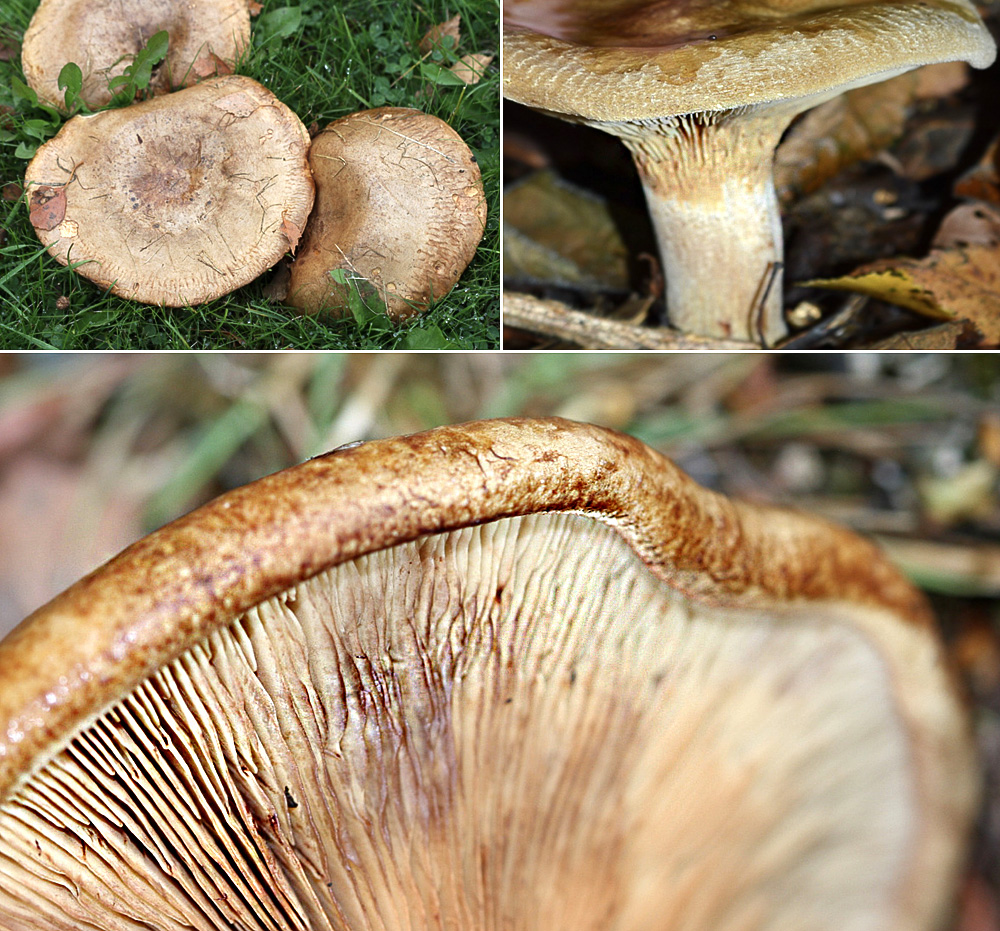It's the time of year when lots of photographs of fungi are submitted to NatureSpot. A few species are easy to name, some species are impossible to identify without much more detailed information, e.g. microscopy. More...
Identifying fungi is a multi-sensory experience - note the environment they are growing in and their neighbours (e.g. trees) - some species only grow under conifers, etc. The Conifer Tuft (Hypholoma capnoides) looks very similar to the Sulphur Tuft but is always found on dead conifers. Smell (not taste!) them - this can be helpful, e.g. the Coconut Milkcap (Lactarius glyciosmus) smells like desiccated coconut. Ultimately, an identification will rely on photographs, and that's where the rule of three comes in. To identify fungi it's helpful to get a good view of the cap (from the top), the gills (from underneath) and the stipe (stem) (from the side) - three images from three angles (rather than three images from much the same angle which we often see).
The same rule also applies to other groups, e.g. many insects such as hoverflies. For identification, a top down (dorsal), side view (lateral) and a head-on (frontal) image is needed. Of course, it's much easier to take photos of fungi because they don't fly away! It's very helpful when recorders remember the Rule of Three and submit three images from three different angles - whatever the species.


